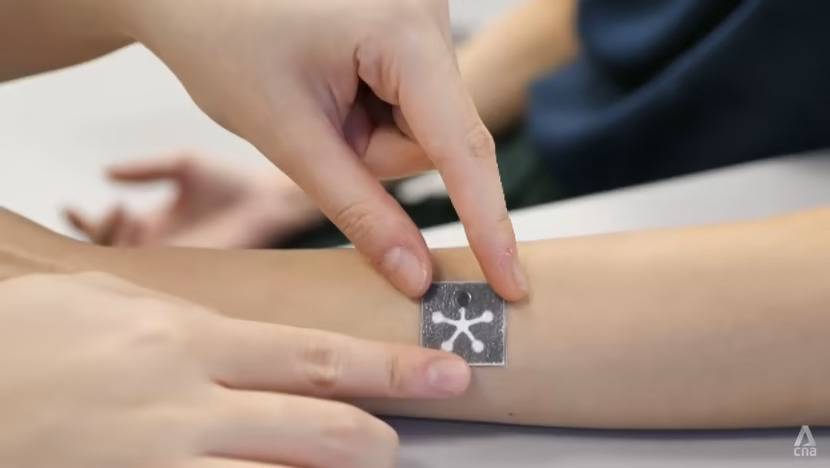Singaporean researchers have developed a wearable, AI-powered skin patch, named PETAL, capable of monitoring wound health.
The technology, jointly created by the National University of Singapore (NUS) and the Agency for Science, Technology and Research (A*STAR), is designed to send early warning signals if wound conditions worsen, allowing medical staff to intervene promptly.
Resembling a pinwheel flower, the patch is equipped with five sensors, or “petals”, each keeping track of a different biomarker: temperature, acidity, uric acid, moisture, and trimethylamine. The central opening of the patch collects wound fluid and distributes it to the sensors, where colour-changing chemicals gauge the indicators.
The Power of AI in Healthcare
Using the patch is straightforward. “Clinicians can simply take a photo of the patch with a smartphone. Embedded sensors in the system record the colour changes,” says Associate Professor Benjamin Tee, the principal investigator. An AI algorithm then analyses the image.
What’s more, PETAL doesn’t require an energy source. It can be customised to suit different wound types and sizes and can be integrated into dressings without being intrusive. With an accuracy rate of 97% in distinguishing healing and non-healing wounds, PETAL promises to be a significant advancement in wound care.
Addressing a Growing Need
Untreated severe wounds, including chronic and burn wounds, can lead to serious complications. Chronic wounds, typically seen in patients with underlying medical conditions like diabetes, fail to heal after three months and require intervention.
In light of Singapore’s ageing population, the need for efficient wound care is escalating. As individuals age, the likelihood of suffering from a chronic wound increases. “By your 70s, you’re three times more likely to suffer from a chronic wound than in your 30s,” says Prof Tee, underscoring the importance of PETAL in meeting this growing need.
A Revolution in Wound Care
Traditional wound infection diagnosis involves swabbing and bacteria culture tests. These procedures can be time-consuming and require multiple technologies. PETAL, however, aims to simplify the process significantly and lower the cost.
“Testing these five parameters traditionally relies on lab-based technologies, which are time-consuming and require multiple facilities. This integrated, miniaturised sensor will potentially provide low-cost wound care,” says principal scientist Su Xiaodi.
Despite the challenges of integrating multiple sensors into one small paper patch, the team was able to create a more holistic, effective, and accurate assessment tool. Following further clinical trials, estimated to take around three years, the researchers hope to introduce PETAL to medical practitioners for use on severe injuries like chronic wounds.
The team’s ultimate vision is for consumers to have access to the technology, enabling its use even for minor cuts. Ideally, PETAL will facilitate proper wound recovery processes and minimise scarring.
A Medical Perspective
From a medical standpoint, innovations like PETAL represent a significant advancement in wound management. Current methods of wound assessment can be subjective and potentially inaccurate, leading to delays in diagnosis and treatment of complications.
This AI-powered patch allows for continuous, objective monitoring of wounds, providing clinicians with real-time data to guide treatment decisions. By capturing multiple biomarkers, it paints a comprehensive picture of the wound’s state, enhancing the precision of care.
Its potential for customisation and integration into wound dressings can facilitate home-based wound care, reducing hospital visits and associated healthcare costs, particularly significant in the context of ageing Asian populations.
The medical community eagerly awaits the ongoing clinical trials’ results. If successful, this could improve wound care outcomes for patients across Asia and potentially worldwide.

